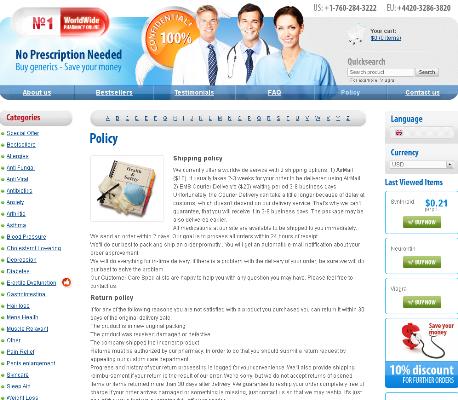How Antabuse and Naltrexone Work in the Body
Antabuse (disulfiram) and naltrexone operate through distinctly different mechanisms once introduced into the body. Antabuse acts as a deterrent; it interferes with the way alcohol is metabolized, resulting in unpleasant physical reactions like flushing, nausea, and headache if even small amounts of alcohol are consumed. This creates a strong psychological barrier against drinking.
Naltrexone takes a subtler approach. It blocks opioid receptors in the brain, which are part of the reward system activated by alcohol consumption. By dulling the pleasurable effects of drinking, naltrexone can reduce the desire to consume alcohol, helping individuals manage their cravings more effectively.
| Medication | Main Action | Primary Effect |
|---|---|---|
| Antabuse | Blocks alcohol breakdown | Triggers negative symptoms if alcohol is consumed |
| Naltrexone | Blocks opioid receptors | Reduces alcohol-induced pleasure and cravings |
Effectiveness in Preventing Alcohol Cravings

When comparing antabuse and naltrexone, patients often notice distinct experiences. Antabuse works by creating an immediate physical reaction to alcohol, making even a small drink highly unpleasant. Because of this, it acts as a powerful deterrent, but its impact is more about creating aversion than directly reducing cravings themselves. Many individuals find that this direct consequence helps reinforce their commitment to sobriety.
Naltrexone takes a very different approach. Instead of causing an adverse reaction, it blocks the rewarding effects of alcohol in the brain. Over time, this reduces the desire to drink by making alcohol consumption feel less enjoyable and satisfying. This gradual dampening of cravings can empower people to regain control.
Ultimately, the choice between antabuse and naltrexone often depends on personal motivation and drinking patterns.
Side Effects and Safety Profiles Compared
When considering antabuse, it’s important to know that its main side effect is a strong physical reaction if alcohol is consumed—even in small amounts. This reaction may include flushing, nausea, and heart palpitations, which can act as a powerful deterrent but also be unpleasant. On the other hand, naltrexone doesn’t cause aversive reactions with alcohol. Instead, its possible side effects typically include nausea, headache, or fatigue, and these are generally mild and short-lived.
For safety, antabuse requires careful monitoring in individuals with heart or liver conditions, while naltrexone is not recommended for those with liver disease or those using opioids.
Typical Treatment Duration and Medical Supervision

When beginning a regimen with antabuse, healthcare providers typically set a clear treatment plan tailored to the individual's needs. Doctors often recommend a supervised start in a clinical or outpatient setting to monitor initial reactions. Due to antabuse’s unique way of working—blocking the body’s ability to metabolize alcohol—it’s essential that patients commit to avoiding all sources of alcohol, even those found in everyday products. Naltrexone, on the other hand, usually involves a flexible schedule that can adapt to daily life, sometimes requiring only a monthly injection.
Throughout the process, regular check-ins with medical professionals are crucial. These appointments offer an opportunity to assess progress, adjust doses, and address any emerging side effects or concerns. Adherence to follow-up helps ensure safety, especially given the varying impact of these medications on different individuals.
Doctors may gradually alter dosages based on patient response, with some patients using these medications long-term for maintenance. In both cases, ongoing support—whether in person or via telehealth—plays a vital role. With attentive medical supervision and personalized treatment planning, patients are more likely to experience sustained success in their recovery journey.
Lifestyle Impact and Patient Suitability Factors
For individuals considering antabuse, daily routines often require thoughtful adjustments. Since this medication triggers intense reactions if alcohol is consumed, patients must be vigilant about even hidden sources of alcohol, like certain sauces or mouthwashes. In contrast, naltrexone offers more flexibility, as it doesn’t cause a severe physical response if alcohol is ingested, though it does dampen the pleasurable effects of drinking. These distinct impacts can shape not only social choices, but also the sense of autonomy and confidence in daily life.
| Medication | Lifestyle Adjustment | Ideal Candidates |
|---|---|---|
| Antabuse | Strict alcohol avoidance, label vigilance | Highly motivated, structured environment |
| Naltrexone | Moderate lifestyle change, flexible use | Desiring reduced cravings, fewer strict restrictions |
Interactions with Other Medications and Substances
When starting medication for alcohol dependence, doctors pay close attention to possible interactions with other drugs. Antabuse can intensify the effects of certain medicines, especially those metabolized by the liver, as well as cause dangerous reactions with alcohol-containing products—even small amounts in sauces or cough syrups. On the other hand, naltrexone may interact with opioids, blocking their effects and causing withdrawal if taken together.
Patients often overlook how herbal supplements or over-the-counter remedies might mix with these medications. This oversight can reduce effectiveness or heighten side effects.
It’s crucial to discuss your entire medication list—including non-prescription items—with your healthcare provider before starting either Antabuse or naltrexone. With careful supervision, you can avoid most problematic interactions and ensure your treatment is both effective and safe.



